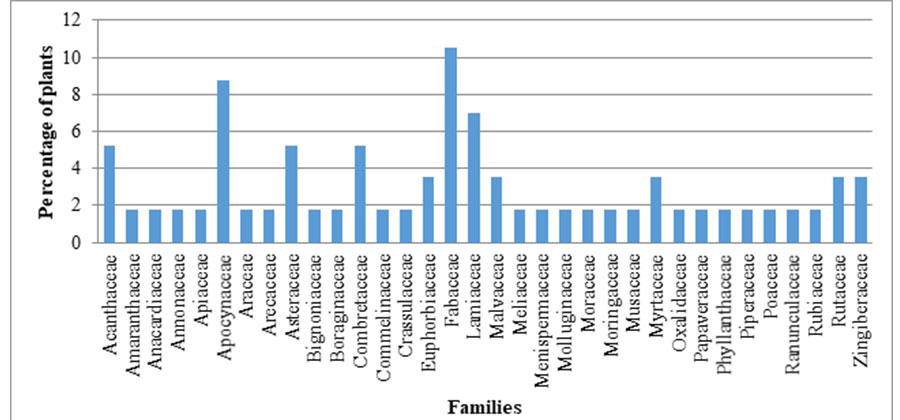


Indian Journal of Science and Technology
Year: 2020, Volume: 13, Issue: 16, Pages: 1676-1685
Original Article
Aninda Mandal1∗, Puja Saha1 , Afreen Begum1 , Anipa Saha1 , Bidisha Chakraborty1 , Shyamali Dutta1 , Karan Kumar Roy1
1 Department of Botany, A.B. N. Seal College, Cooch Behar, West Bengal, India. Tel: +91- 9434602182
∗Corresponding author:
Aninda Mandal
Department of Botany, A.B. N. Seal College, Cooch Behar, West Bengal, India.
Tel: +91-9434602182
Email: [email protected]
Received Date:22 April 2020, Accepted Date:11 May 2020, Published Date:10 June 2020
Objectives: The field study was undertaken at the adjoining villages of Rasikbil of Cooch Behar district, West Bengal, India to record the ethnomedicinal plants used by the Rava, Santal and Oraon people and to explore their traditional knowledge to treat common ailments. Methods: With the help of pretested semi-structured questionnaire, tribal men and women were interviewed on ethnomedicinal uses of local flora during July 2018 to January 2020. The questionnaire covered aspects like local name, scientific name, family, used parts, ethnomedicinal uses, among others. Routine methods of plant collection and herbarium techniques were followed and the collected species were identified using relevant sources. Findings: A total of 57 plant species of 34 families were found to be used to treat several diseases like cough and cold, diabetes, among others. In few cases, the plant parts were used in combination with other plant parts to prepare traditional medicine. The plant family Fabaceae represents the highest number (6 species) of ethnomedicinal plants among others. Among different plant parts used for the preparation of medicine, leaves were most frequently used (49.12%) for the treatment of diseases. Besides, fruits, seeds, roots, etc. were also found to be used as traditional medicine for the treatment of ailments among human beings. Applications: The traditional knowledge of ethnic people regarding the utilisation of ethnomedicinal plants may be used in the preparation of pharmaceutical products which could contribute towards availability of essential drugs at much reduced cost. In addition, populations of medicinal plants must be monitored in order to conserve them and aid in planning sustainable utilisation. Novelty: In comparison to earlier reports, present study revealed 14 more plant species having immense ethnomedicinal values and frequently used by the tribal people in the area. In this regard, the study is significant to enrich the existing database.
Keywords: Ethnomedicine; Medicinal plants; Rava; Santal; Oraon; Rasikbil; Cooch Behar
© 2020 Mandal, Saha, Begum, Saha, Chakraborty, Dutta, Roy. This is an open access article distributed under the terms of the Creative Commons Attribution License, which permits unrestricted use, distribution, and reproduction in any medium, provided the original author and source are credited.
Published By Indian Society for Education and Environment (iSee)
Subscribe now for latest articles and news.